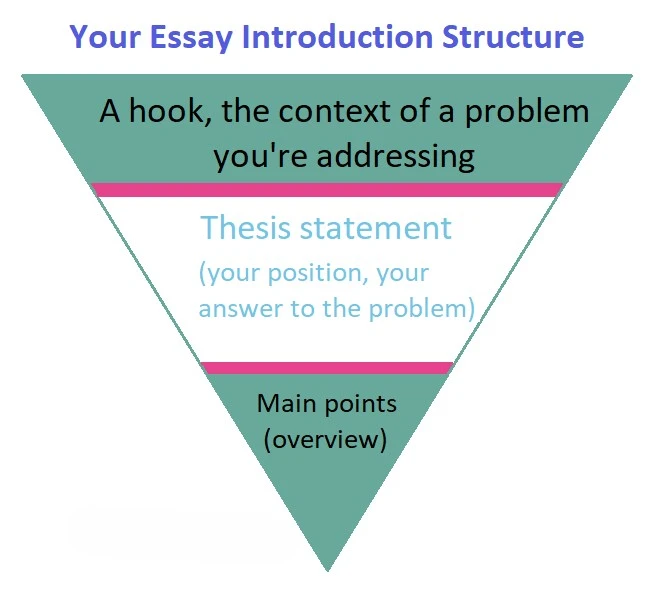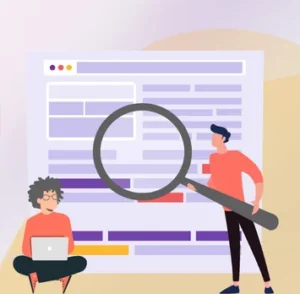“Imagine if you could make your readers hang onto every word of your essay from the very first sentence. Sound impossible? It’s not! Crafting a mesmerizing essay introduction is the secret weapon of the most influential writers. In this guide, we’re about to unlock the art of crafting introductions that not only grab attention but also keep your readers hooked throughout your essay.”
When it comes to writing an essay, your introduction is your one-shot opportunity to make a lasting impression. This vital section sets the stage for the entire essay, influencing how your audience perceives your work. In the following sections, we’ll delve into the intricacies of creating introductions that engage your readers right from the start.
Understanding the Process of an Essay Introduction

-
Setting the Stage
The introduction serves as the stage where you present your topic to the audience. It should offer a clear understanding of what your essay will be about.
Explanation:
Imagine you’re attending a play or a movie. Before the story unfolds, there’s typically a stage or screen that sets the scene and introduces you to the world in which the story will take place. Similarly, in academic and persuasive writing, the introduction serves as this stage. It’s the part of your essay where you introduce your topic to your readers.
- Clarity: Your introduction should provide a clear and concise explanation of what your essay is going to be about. It should establish the context and give readers a basic understanding of the subject matter.
- Relevance: The introduction should establish the relevance of the topic to your audience. Why should they care about this topic? What makes it important or interesting? This helps to engage your readers from the very beginning.
-
Grabbing Attention with your Essay Introduction
An engaging introduction grabs the reader’s attention, making them eager to delve deeper into your essay. It’s your chance to make a memorable first impression.
Explanation:
In a world with a constant influx of information, readers have a limited attention span. Your introduction plays a crucial role in ensuring that your audience doesn’t click away or lose interest after the first few sentences.
- Engagement: To grab your reader’s attention, you might use a compelling anecdote, a surprising fact, a thought-provoking quote, or a rhetorical question. The goal is to pique their curiosity and make them want to keep reading.
- First Impression: The introduction is your opportunity to make a strong first impression. If your introduction is engaging and well-crafted, readers are more likely to believe that the rest of your essay will be equally well-written and interesting.
-
Providing Direction
The introduction should also provide a roadmap for your essay, outlining the main points you’ll cover and the argument you’ll present.
Explanation:
Your introduction shouldn’t just set the stage and grab attention; it should also provide a clear roadmap for your readers. This means giving them a sense of what to expect in the rest of your essay.
- Thesis Statement: Typically, your introduction will end with a thesis statement. This is a concise statement that outlines the main argument or purpose of your essay. It serves as a guidepost for your readers, indicating what the essay will be arguing or discussing.
- Main Points: In addition to the thesis statement, you can briefly mention the main points or arguments that you’ll be addressing in the body of your essay. This helps your readers anticipate the structure of your essay and makes it easier for them to follow your argument.
In summary, the introduction of an essay is not just a formality; it plays a critical role in engaging your audience, setting the stage, and providing direction for your essay. A well-crafted introduction can make your writing more appealing and help readers understand what to expect, increasing the overall effectiveness of your essay.
The Structure of an Effective Essay Introduction

An effective introduction serves as a roadmap for your essay and engages your readers from the very beginning. It consists of several key elements, each of which plays a crucial role in setting the stage for your essay. Let’s break down each component in detail:
Start with a Hook
The hook is the opening sentence or two of your introduction, and its primary purpose is to grab your reader’s attention and pique their interest in your topic. Here are some effective types of hooks:
- Surprising Fact: Begin with a surprising or intriguing fact or statistic related to your essay’s topic. This immediately engages the reader and makes them curious to learn more.Example: “Did you know that the average person spends over five years of their life on social media?”
- Compelling Quote: Use a relevant and thought-provoking quote from a reputable source. This can add credibility to your essay and create an emotional connection with the reader.Example: “As Mark Twain once said, ‘The two most important days in your life are the day you are born and the day you find out why.'”
- Thought-Provoking Question: Pose a question that challenges the reader’s thinking and encourages them to reflect on the topic.Example: “What if I told you that the key to happiness lies in the pursuit of simplicity rather than excess?”
Provide Background Information
After hooking the reader’s attention, it’s essential to provide some context or background information about your subject. This helps the reader understand the broader context of your essay and why the topic is relevant or important. This section can be a few sentences to a paragraph long, depending on the complexity of your topic.
Example: If your essay is about the impact of climate change, you might briefly mention the rise in global temperatures, the consequences of extreme weather events, and the increasing concern among scientists and policymakers.
State Your Thesis
Following the background information, you should present your thesis statement. Your thesis is the central argument or main point of your essay. It should be concise, specific, and clear, providing a roadmap for what the reader can expect in the rest of the essay.
Example: “In this essay, I will argue that addressing climate change requires a global commitment to reducing greenhouse gas emissions, transitioning to renewable energy sources, and implementing sustainable practices in all sectors of society.”
Outline the Main Points
In an argumentative essay, after introducing your thesis statement, it is imperative to concisely outline the key arguments or main points that will be discussed within the body of your essay. This critical step serves as a preview of the essay’s structure and content, aiding readers in comprehending the organization and flow of your argumentative essay. Additionally, incorporating statistical facts from credible sources can enhance the persuasive power of your arguments. Ensure you provide proper references for these statistics to bolster the credibility of your claims within the argumentative essay.
[Do Read, Vital Role of Referencing in Academic Writing]
Example: “I will explore these ideas by first examining the current state of greenhouse gas emissions and their impact on the environment. Then, I will discuss the importance of transitioning to renewable energy sources as a sustainable solution. Finally, I will delve into the role of individual actions and policy changes in mitigating climate change.”
Transition to the Body
To conclude your introduction, smoothly transition from the thesis statement and main points to the body of the essay. This transition should be logical and seamless, ensuring that the reader is prepared for the in-depth exploration of your topic in the following paragraphs.
Example: “With a clear understanding of the challenges posed by climate change and the potential solutions outlined above, we can now delve into the complexities of this critical issue and the steps needed to address it.”
Tips to Write a Good Essay Introduction

Keep It Concise
An essential aspect of an effective introduction is its conciseness. Here’s why this is important:
- Capture Attention Quickly: In today’s fast-paced world, readers have limited attention spans. A concise introduction grabs their attention faster and keeps them engaged.
- Set the Expectation: The introduction should provide a clear sense of what the essay is about without delving into extensive details. It sets the stage for what’s to come in the body of the essay.
- Avoid Overwhelming the Reader: Lengthy explanations or unnecessary details in the introduction can overwhelm the reader and make them lose interest before getting to the main content.
Use Vivid Language
Vivid language enhances the quality of your introduction in several ways:
- Engage the Senses: Vivid descriptions and imagery appeal to the reader’s senses, making the topic more relatable and memorable. This sensory engagement can create a stronger emotional connection with your readers.
- Paint a Picture: Vivid language allows you to paint a clear mental image of the topic or the scenario you’re discussing. This helps readers better understand and visualize what you’re talking about.
- Evoke Emotions: Words that evoke emotions can draw readers into your topic on a deeper level. Whether it’s excitement, empathy, curiosity, or concern, emotions make your introduction more engaging.
Be Original
Originality is key to making your introduction stand out:
- Avoid Clichés: Overused phrases and clichés can make your introduction sound predictable and uninteresting. Readers are more likely to engage with something fresh and unique.
- Show Your Voice: Your introduction is an opportunity to showcase your unique voice as a writer. Use it to express your perspective, style, and personality in a way that sets your essay apart from others.
- Surprise and Intrigue: Originality can take the form of a surprising fact, a unique angle on the topic, or an unexpected perspective. These elements can captivate readers and make them curious to read further.
Revise and Edit
The importance of revising and editing cannot be overstated:
- Polished Presentation: An introduction that is well-revised and edited demonstrates professionalism and attention to detail. It shows that you’ve put effort into crafting your essay.
- Clarity and Coherence: Through revision, you can ensure that your introduction flows smoothly and logically. It should be easy for readers to follow your train of thought.
- Grammar and Mechanics: Editing helps eliminate grammatical errors, spelling mistakes, and awkward phrasing, all of which can distract readers and diminish the impact of your introduction.
- Improve Readability: Effective editing can improve the overall readability of your introduction. This means it’s easier for readers to understand and engage with your ideas.
A Step-by-Step Guide to Writing Your Introduction

Let’s break down each step in this step-by-step guide to writing your introduction in detail:
Step 1 – Brainstorm Ideas
Before you start writing your introduction, take some time to brainstorm ideas. Consider the following aspects:
- Tone: Think about the tone you want to set for your essay. Do you want it to be serious, humorous, formal, or informal? The tone should match the overall theme and purpose of your essay.
- Style: Consider your writing style. Are you aiming for a more narrative approach, an analytical one, or perhaps a personal reflection? Your writing style should align with the content and purpose of your essay.
- Approach: Decide on the approach you’ll take in the introduction. Will you use a surprising fact, a compelling anecdote, a thought-provoking question, or something else entirely? Your approach should be engaging and relevant to your topic.
Step 2 – Craft the Hook
The hook is the attention-grabbing element of your introduction. Here’s how to craft a compelling hook:
- Relevance: Ensure that the hook relates directly to your essay’s theme. It should provide a clear link between the engaging element and the topic you’ll be discussing.
- Engagement: The hook should captivate your readers and make them want to continue reading. It can be a surprising fact, a compelling quote, a vivid description, or a thought-provoking question.
- Connection: Establish a connection between the hook and the rest of your introduction. The hook should seamlessly lead into the next part of your introduction.
Step 3 – Provide Context
After grabbing your reader’s attention with the hook, it’s essential to provide context or background information:
- Relevance: The background information should be directly related to your topic. Explain why the topic is important or relevant to your readers.
- Clarity: Offer clear and concise information. Avoid overwhelming the reader with too many details in the introduction. Save the deeper explanations for the body of the essay.
- Engagement: While providing context, aim to keep the reader engaged. Use descriptive language and engaging writing to maintain their interest.
Step 4 – State Your Thesis
The thesis statement is a crucial component of your introduction:
- Clarity: Craft a clear and concise thesis statement that presents the main point or argument of your essay. Avoid vague or ambiguous language.
- Impact: Make sure your thesis statement is impactful. It should give readers a reason to continue reading your essay to explore your argument in depth.
- Alignment: Ensure that your thesis statement aligns with the hook and the context you’ve provided. It should flow naturally from the previous elements of your introduction.
Step 5 – Outline Main Points
After presenting your thesis, briefly outline the main points or arguments you’ll discuss in the essay:
- Conciseness: Keep this section brief and to the point. You’re offering a glimpse of what’s to come in the body of the essay, not providing detailed explanations.
- Coherence: Make sure the main points logically follow from your thesis statement. They should provide a clear roadmap for the reader.
- Engagement: While outlining, use language that maintains the reader’s interest and curiosity about the upcoming content.
Step 6 – Transition Smoothly
The final step in your introduction is to transition smoothly into the body of the essay:
- Logical Flow: Ensure that the transition is seamless and logical. Readers should feel that the introduction naturally leads them into the main content of the essay.
- Connection: Reiterate the link between the introduction and the body of the essay. The transition should make it clear that the reader is now moving from the introductory stage to the in-depth exploration of the topic.
Conclusion
In conclusion, the art of crafting an effective essay introduction necessitates meticulous planning and unwavering attention to detail. This introductory section serves as the gateway to your essay’s substance, wielding significant influence over your reader’s level of engagement. By adhering to the structured approach, insightful tips, and the step-by-step guide outlined in this article, you will possess the tools necessary to fashion introductions that enthrall your audience and establish the foundation for a triumphant essay.
Similarly, just as a meticulously structured introduction captivates readers, a reputable assignment help service should actively engage students by delivering invaluable support, articulating clear expectations, and showcasing its professionalism and expertise in the field. In both instances, meticulous planning and an unswerving focus on detail are pivotal for creating a lasting impression and ensuring the attainment of successful outcomes.
(Frequently Asked Questions) FAQs

Can I use a personal anecdote in my introduction?
Absolutely! Personal anecdotes can be a great way to connect with your readers and make your introduction more relatable.
Should I restate my thesis in the conclusion?
Yes, restating your thesis in the conclusion helps reinforce your main point and provides closure to your essay.
How long should an essay introduction be?
When you think of a word limit for an essay introduction aim for an introduction that is about 5-10% of your total essay length.
Can I use humor in my introduction?
Using humor can be effective if it aligns with your essay’s tone and subject matter, but use it sparingly and thoughtfully.
Is it okay to write the introduction last?
Yes, many writers find it easier to write the introduction after they’ve drafted the main body of the essay, as it allows them to better summarize the content.


